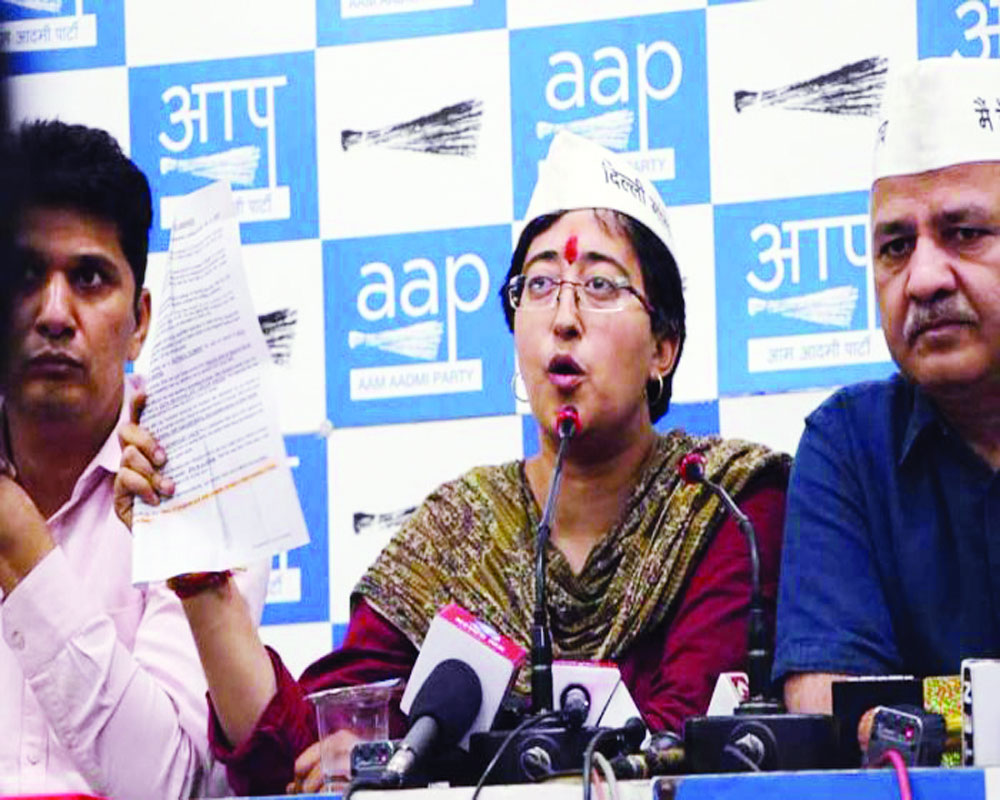The recent pamphleteering against AAP’s candidate, Atishi, won’t make any difference as Delhi’s voters are guided by personal choices than forced sentiments
Very few politicians are trusted by the common man. And certainly, none of them are trusted when parties sell brochure dreams during every election. The Aam Aadmi Party (AAP) candidate for the East Delhi seat in the ongoing Lok Sabha polls, Atishi Marlena, doesn’t suffer a trust deficit of any sort or need a sales pitch. Even her worst critic would admit that she at least worked hard to get where she is and doesn’t need to paratroop publicity for herself. As an advisor on education to the AAP government in Delhi, she has restored credibility in the government school system, improved the learning infrastructure, appointed mentor-teachers to support local schools and built competitive and performance-oriented interventions. The improved board results and efficiencies of students from these schools are testament enough. So she definitely doesn’t need a self-deprecatory pamphlet, one that is downright putrid, to create a buzz around herself. That’s why any theory that the AAP had resorted to poll-time gimmickry to get a sympathy vote by outraging the integrity of its woman leader is an idiotic low in any debate in any part of the country. Though pamphlets have historically been used by Communist parties to push their agenda and ideology in every home, this one, inserted smartly between morning newspapers of East Delhi residents, wasn’t about an appeal for vote. Instead, it listed sexist, casteist and religious reasons why nobody should vote for Atishi or the Congress for that matter. Though unsigned, given its tenor, it was assumed to have been the handiwork of the Bharatiya Janata Party (BJP), which has had a stormy adversarial relationship with AAP. However, its star candidate and cricketer Gautam Gambhir, who is expected to hit the ball out of the park given his aura, has flung a defamation suit at AAP and a challenge that he would quit politics altogether if it was proven he was the author of such a vicious bit of propaganda war. Gambhir is right and may not even be aware that a rabid supporter or fan group may have done gross mischief. But in a polarised polity such as the one that exists now, one doesn’t need to be a prime mover. The division has crept into the system so insidiously, slipping through every crack, that it could be any mad hatter’s handiwork. Particularly in a scenario where national-level leaders themselves are hitting each other drastically below the belt in public speeches, pretending to force a presidential-style campaign with more slander than substance. But character assassination of a woman in the basest terms is certainly a misfired gun that better be junked in the cesspool it came from.
One must understand that the Delhi voter is different and doesn’t go by waves or prevalent political thought. More arithmetic-dependent, the city is home to power players, bureaucracy, the service class and businesses, each of whom looks to extract their advantages. In those areas where trading classes dominate, there are worries about recovering from the effects of demonetisation and faulty GST. In East Delhi itself, there is so much segmentation that it is difficult to seize a unifying issue. For example, the upscale areas of Nizamuddin East, New Friends Colony and Vivek Vihar would probably go by the macro picture and be swayed by trending issues like national security and India’s international standing. But for slum clusters of Trilokpuri and Okhla, it will always be about who guarantees the better life and facilities at the constituency level. So there are issues like transport, pollution, sealing (which has put many small units and home-run businesses at risk), joblessness (with crisis hitting public sector companies that are headquartered here), regularisation of unauthorised migrant colonies, garbage disposal and crime, especially against women. In fact, BJP leader Nitin Gadkari has actually sensed the pulse of Delhi by saying that he had workable solutions to the city’s two biggest problems — pollution and traffic. While the AAP has mastered neighbourhood issues too, there has been an anti-incumbency slide among traditional Congress voters who had switched loyalties. Besides, AAP would seem good enough for a Vidhan Sabha than a Lok Sabha, where it is only plugging a statehood issue, too abstract for the baseline voter. A three-way split, many believe, will help the BJP. Either way, Delhi elections cannot be won with pamphleteering. And this episode should best remain a lesson on how not to push too far.
Writer & Courtesy: The Pioneer








 OpinionExpress.In
OpinionExpress.In















Comments (0)